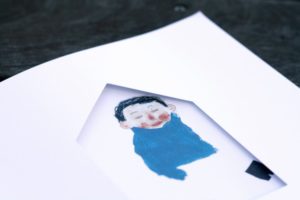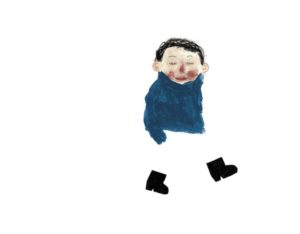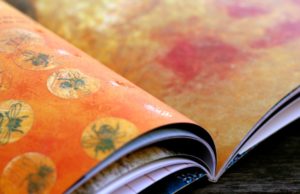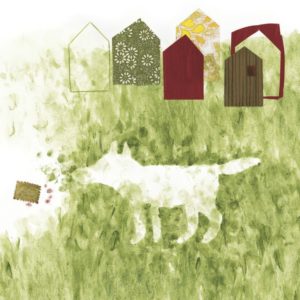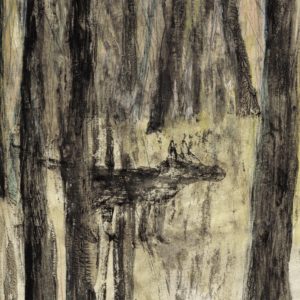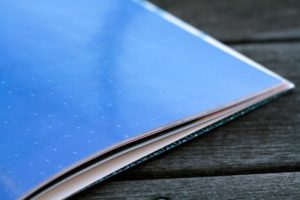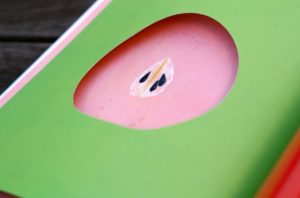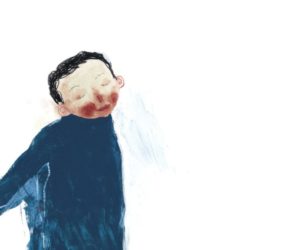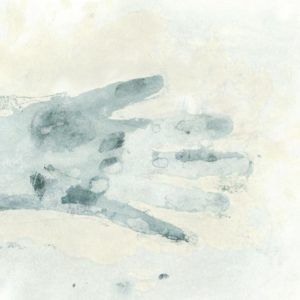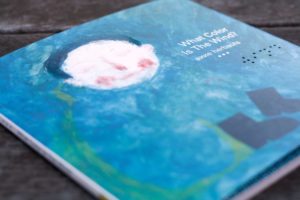What Color Is The Wind? A Most Unusual Serenade to the Senses, Inspired by a Blind Child
INSPIRATIONAL, 17 Oct 2016
Maria Popova | Brain Pickings – TRANSCEND Media Service
An imaginative invitation to empathy and self-expansion.
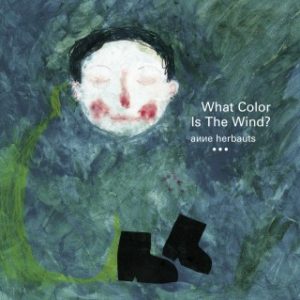 “What is essential is invisible to the eye,” Antoine de Saint-Exupéry wrote in The Little Prince. Those bereft of vision, therefore, need not be bereft of the essential — they discern it by means other than sight.
“What is essential is invisible to the eye,” Antoine de Saint-Exupéry wrote in The Little Prince. Those bereft of vision, therefore, need not be bereft of the essential — they discern it by means other than sight.
The richness of that otherness is what Belgian artist and author Anne Herbauts came to see in a surprising and profound question from a blind child. During a bookmaking workshop she was leading, a little boy asked her whether she, as an artist, could tell him what color the wind was — a notion of the same trans-sensory, synesthetic quality as Helen Keller’s electrifying account of “hearing” Beethoven.
Touched by the sincerity of the boy’s curiosity, Herbauts set out to offer her answer in What Color Is the Wind? (public library), translated by Claudia Zoe Bedrick — a largehearted, unusual book that takes the reader on a sensorial adventure, with the tactile magic of The Black Book of Colors and the die-cut delight of Bruno Munari’s visionary vintage gems.
The story’s protagonist, whom Herbauts affectionately calls “the little giant,” goes in search of an answer to his synesthetic question. Every piece of nature he encounters gives him a different answer — to the bee, the wind is the warm color of the sun; the old dog, who perceives the world through smell, experiences it as “pink, flowery, pale white”; to the wolf, it smells of the forest; for the mountain, the wind is a bird; for the window, it is the color of time.
Herbauts paints the sensory landscape with extraordinarily inventive bookmaking techniques to which this screen can do no justice — appleseeds peek through a die-cut hole, raindrops gleam embossed on a laminated page, debossed grooves invite the touch of tree bark. What emerges is a parallel invitation to empathy and self-expansion in imagining the world as the unsighted experience it and exploring a different sensorial space than the one we sighted humans ordinarily inhabit. Just as the universe of smell unlocks hidden layers of reality, so does the universe of touch.
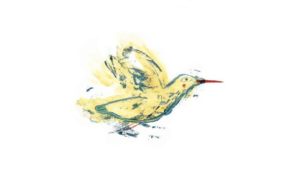 The little giant asks the bird,
The little giant asks the bird,
What color…
But the bird has flown away.
And the enormous giant,
with a slow gesture says:
The color of the wind?
It is everything at once.
This whole book.
Then he takes the book and,
thumb against its edge,
he lets the pages fly.
The immeasurably wonderful What Color Is the Wind? comes from Brooklyn-based independent powerhouse Enchanted Lion, publisher of such imaginative treasures as The Lion and the Bird, Cry, Heart, But Never Break, Pinocchio: The Origin Story, and Louis I, King of the Sheep.
_______________________________________
Brain Pickings is the brain child of Maria Popova, an interestingness hunter-gatherer and curious mind at large obsessed with combinatorial creativity who also writes for Wired UK and The Atlantic, among others, and is an MIT Futures of Entertainment Fellow. She has gotten occasional help from a handful of guest contributors.
Go to Original – brainpickings.org
DISCLAIMER: The statements, views and opinions expressed in pieces republished here are solely those of the authors and do not necessarily represent those of TMS. In accordance with title 17 U.S.C. section 107, this material is distributed without profit to those who have expressed a prior interest in receiving the included information for research and educational purposes. TMS has no affiliation whatsoever with the originator of this article nor is TMS endorsed or sponsored by the originator. “GO TO ORIGINAL” links are provided as a convenience to our readers and allow for verification of authenticity. However, as originating pages are often updated by their originating host sites, the versions posted may not match the versions our readers view when clicking the “GO TO ORIGINAL” links. This site contains copyrighted material the use of which has not always been specifically authorized by the copyright owner. We are making such material available in our efforts to advance understanding of environmental, political, human rights, economic, democracy, scientific, and social justice issues, etc. We believe this constitutes a ‘fair use’ of any such copyrighted material as provided for in section 107 of the US Copyright Law. In accordance with Title 17 U.S.C. Section 107, the material on this site is distributed without profit to those who have expressed a prior interest in receiving the included information for research and educational purposes. For more information go to: http://www.law.cornell.edu/uscode/17/107.shtml. If you wish to use copyrighted material from this site for purposes of your own that go beyond ‘fair use’, you must obtain permission from the copyright owner.
